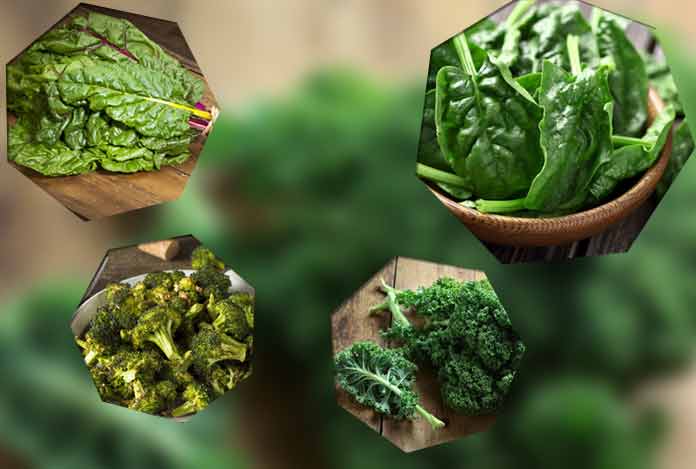
Unarguably, variety makes the life more lively and this holds true for your diet too. You might naturally be eating a wide range of vegetables and fruits, but it is equally important to rotate your leafy greens. Kimberly Snyder emphasizes the importance of rotating the greens because eating the same leafy greens time and again can leave you deprived of many nutrients.
It is always good to include lots of veggies in your diet and Kimberly advocates just that! We form habits and generally try to stock up on same leafy greens, whenever we go out to buy groceries. This way, we end up eating same leafy greens or blend the same ones every time, which in turn deprive us of many essential nutrients.
Kimberly states that there has been a constant battle among proponents of healthy diet on whether kale is better than spinach or vice versa from a health perspective. Well, the truth is neither of them is better or inferior, but both have some unique health-related benefits. Similarly, other leafy greens, such as collards, arugula and romaine, individually offer varied health benefits.
Let’s get started with Kimberly’s guide to different leafy greens.
Leafy Greens Families
 Kimberly Snyder
Kimberly Snyder
Greens that belong to same family offer similar health benefits. Here are different families of leafy greens you need to know about.
Brassicaceae/Cruciferae
- Arugula
- Kale
- Collards
- Cabbage
- Mustard Greens
- Radish Greens
- Bok Choy
- Brussels Sprouts
- Broccoli
Chenopodiaceae/Amaranthaceae
- Swiss Chard
- Beet Greens
- Spinach
- Lamb’s Quarters
Asteraceae
- Leaf Lettuce
- Romaine Lettuce
- Dandelion
- Endive
Apiaceae
- Cilantro
- Dill
- Parsley
Reap A Wide Range of Health Benefits with Leafy Greens
Incorporating a wide range of leafy greens in your diet ensure that you are having adequate amounts of all the essential vitamins and minerals. So, it is better not to entertain the idea that a particular leafy green is better than others. For instance, kale has double the amount of calcium than spinach, but still less than dandelion greens. On the other hand, spinach’s iron content is way more than that of kale.
Among other leafy greens of the Cruciferae family, kale has the largest concentration of anti-inflammatory nutrients and cancer-fighting antioxidants. Kale contains two major antioxidants carotenoids and flavonoids (45 different kinds of them). Both of these antioxidants combat free radicals while keeping off the oxidative stress and the health conditions associated with it such as cataracts. Kale also contains high amounts of phytochemicals, including glucosinolates. These compounds are important because when broken down, they get converted into smaller compounds, known as isothiocyanates – a class of compound known to boost the body’s cancer prevention and detoxification mechanisms.
As already stated, in comparison to kale, spinach contains more iron, which is crucial for pregnant women and those, who wish to conceive. Spinach also has an adequate amount of Vitamin B9 or Folate. This vitamin is an essential component of the prenatal vitamins and can prevent various complications like neural tube defects in the developing fetus.
Like other members of the Vitamin B family, Folate is also involved in homocysteine metabolism. By reducing your homocysteine levels, you can cut down your risk of developing cardiovascular diseases. Spinach further reduces risk of stomach, pancreatic, lung, esophageal, breast, ovarian, cervical and various other types of cancer.
Moreover, spinach has around six times more magnesium content than kale. Magnesium is necessary for muscle relaxation and sound sleep. It also has a fair share of carotenoids. Spinach contains epoxyxanthophylls that protect from various types of cancer, including prostate cancer, and reduce inflammation too. It contains a variety of carotenoids, such as zeaxanthin, beta-carotene and lutein that can prevent several bone problems and cardiovascular diseases. Spinach is also an excellent source of glycoglycerolipid, a lipid known to protect digestive tract lining from damage caused by inflammation.
Besides, if you believe that romaine lettuce is not as good as kale or spinach in terms of nutritional value, then it’s time to check your facts. It comes with myriads of health benefits. It provides around 165% of daily recommended dose of Vitamin A. This leafy green can combat free radicals, responsible for health conditions like cancer, arthritis and heart diseases.
Romaine lettuce is also a great source of potassium, which reduces blood pressure and helps maintain muscle strength. Moreover, the head of this lettuce provides around 44% of the daily recommended dose of essential fatty acids. Romaine Lettuce is also rich in manganese and copper; providing about 33% and 42% of the daily recommended dose of both the nutrients, respectively. If you have already suffered from calcium oxalate kidney stones, you can consume romaine lettuce as it has a very low oxalic acid content.
Avoid Over-Loading Your Greens
Surprisingly, each leafy green has a bit of toxins. These toxins are in extremely trace amounts and usually, do not lead to any serious health issue. The toxin content of greens is, however, a concern for people, who have some existing health condition.
For example, if you have a compromised thyroid, you must know that most cruciferous vegetables, especially kale, contain goitrogens, which can further mess with your thyroid functioning. In such a case, rotating your greens is the possibly the best idea. This way one can prevent various health conditions that may arise due to the accumulation of various anti-nutrients in the body.
Tips for Rotating Your Greens
You must try different leafy greens from different families as eating different leafy greens belonging to a single family will provide you same micronutrients over and over again. However, you don’t need to switch your greens each day, but you can consume kale for a single week, spinach for the next and stock up on chard for some other week.
Besides rotation, be sure about how you are cooking or using leafy greens. When cooked, the amounts of certain phytochemicals, such as carotenoids increases in some leafy greens.
Raw preparations and cooking are two different aspects. Consuming raw leafy greens would preserve the enzymes that convert glucosinolates. On the other hand, cooking inhibits cancer-fighting components, especially isothiocyanates. It is for this reason consuming raw leafy greens is considered healthier.
Nevertheless, cooking the veggies helps in breaking down the fiber; thereby making it easier for the food to pass through the digestive tract. This further makes it easier for the body to absorb nutrients. Additionally, you can relish various greens in the form of smoothies. Often trying various leafy greens and whatever is available in that particular season will ensure that your body is getting all the essential nutrients.
Kimberly encourages to use these leafy greens in various recipes like Rainbow Chard Salad and Rambutan Beauty Recipe recommended by her. These will not just soothe your taste buds but will fulfill you daily dose of vitamins and minerals.










